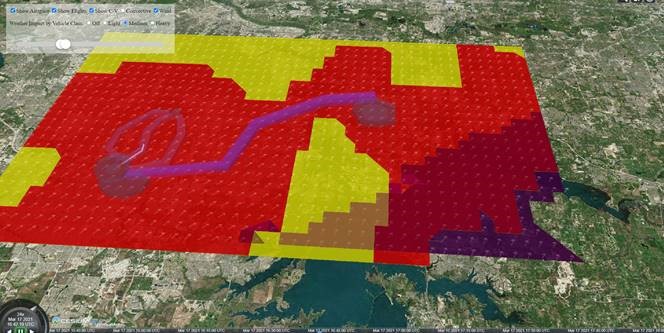Looking to operate a vertiport or need to understand and schedule your vehicles in and out of the fast-emerging UAM markets? We have designed and prototyped a modular, weather-aware Urban Air Mobility (UAM) System Model (USM) comprised of a user-definable, flexible rule base, a weather translation module, and a superfast-time simulation engine. Our system is able to accommodate any future urban-scale weather products or weather data formats, an import benefit of our simulator developed under a NASA Phase III SBIR.

A general-purpose UAM system simulator can support a wide range of use cases including:
USM would contribute to maintaining weather-resilient, efficient UAM operations, helping to coordinate operational responses between UAM vehicle operators, streamlining weather-constrained urban airspace management and facilitating interaction with vertiport capacity management tools. USM would act as an autonomous “simulation / nowcasting probe” receiving continuous weather and traffic forecast updates up to several hours ahead and using machine learning techniques combined with predictive simulations to evaluate possible UAM traffic management actions in real time.
